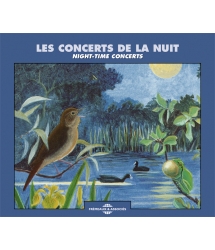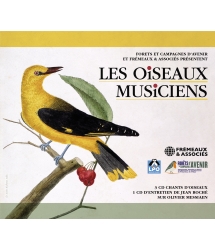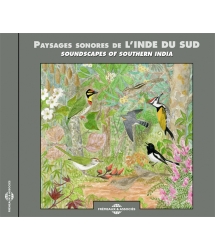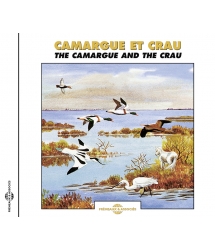- Notre Catalogue
- Philosophie
- Philosophes du XXème siècle et d'aujourd'hui
- Histoire de la philosophie (PUF)
- Contre-Histoire et Brève encyclopédie par Michel Onfray
- L'œuvre philosophique expliquée par Luc Ferry
- La pensée antique
- Les penseurs d'hier vus par les philosophes d'aujourd'hui
- Textes philosophiques historiques interprétés par de grands comédiens
- Histoire
- Livres
- Sciences Humaines
- Paroles historiques
- Livres audio & Littérature
- Notre Catalogue
- Jazz
- Blues - R'n'B - Soul - Gospel
- Rock - Country - Cajun
- Chanson française
- Musiques du monde
- Afrique
- France
- Québec / Canada
- Hawaï
- Antilles
- Caraïbes
- Cuba & Afro-cubain
- Mexique
- Amérique du Sud
- Tango
- Brésil
- Tzigane / Gypsy
- Fado / Portugal
- Flamenco / Espagne
- Yiddish / Israël
- Chine
- Tibet / Népal
- Asie
- Océan indien / Madagascar
- Japon
- Indonésie
- Océanie
- Inde
- Bangladesh
- URSS / Chants communistes
- Musiques du monde / Divers
- Musique classique
- Compositeurs - Musiques de film - B.O.
- Sons de la nature
- Notre Catalogue
- Jeunesse
- Philosophie
- Nouveautés
- Comment commander ?
- Recevoir le catalogue
- Manifeste
- Dictionnaire











- Notre Catalogue
- Philosophie
- Philosophes du XXème siècle et d'aujourd'hui
- Histoire de la philosophie (PUF)
- Contre-Histoire et Brève encyclopédie par Michel Onfray
- L'œuvre philosophique expliquée par Luc Ferry
- La pensée antique
- Les penseurs d'hier vus par les philosophes d'aujourd'hui
- Textes philosophiques historiques interprétés par de grands comédiens
- Histoire
- Livres
- Sciences Humaines
- Paroles historiques
- Livres audio & Littérature
- Notre Catalogue
- Jazz
- Blues - R'n'B - Soul - Gospel
- Rock - Country - Cajun
- Chanson française
- Musiques du monde
- Afrique
- France
- Québec / Canada
- Hawaï
- Antilles
- Caraïbes
- Cuba & Afro-cubain
- Mexique
- Amérique du Sud
- Tango
- Brésil
- Tzigane / Gypsy
- Fado / Portugal
- Flamenco / Espagne
- Yiddish / Israël
- Chine
- Tibet / Népal
- Asie
- Océan indien / Madagascar
- Japon
- Indonésie
- Océanie
- Inde
- Bangladesh
- URSS / Chants communistes
- Musiques du monde / Divers
- Musique classique
- Compositeurs - Musiques de film - B.O.
- Sons de la nature
- Notre Catalogue
- Jeunesse
- Philosophie
- Nouveautés
- Comment commander ?
- Recevoir le catalogue
- Manifeste
- Dictionnaire
A SCIENTIFIC INTERPRETATION
Ref.: FA652
Direction Artistique : JEAN-LUC HERELLE
Label : Frémeaux & Associés
Durée totale de l'œuvre : 1 heures 6 minutes
Nbre. CD : 1
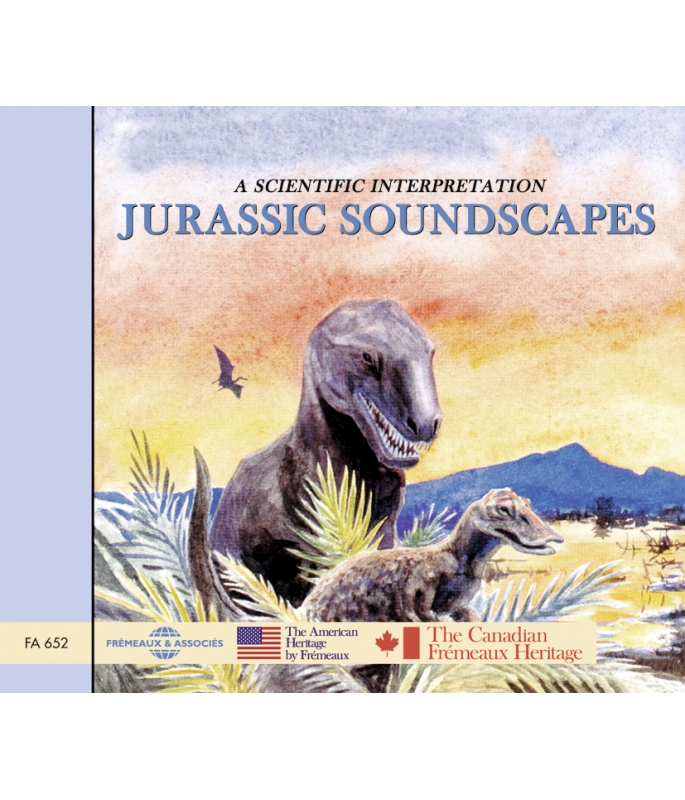
A SCIENTIFIC INTERPRETATION
The publication of the natural sounds of Jurassic dinosaurs in the quite serious collection of biological recordings published by Frémeaux & Associés may at first sight appear to be a little ridiculous to the public and to the specialised press.
Nonetheless, the natural sound recorder Jean-Luc Hérelle has put together the sounds of the Iguanodon and the Tyrannosaurus in a Giant Sequoia forest during the early Jurassic (a period going back some 200 million years).
The creation and production of this sound material is based on recent scientific findings, on the relationship between dinosaurs and today’s birds and dinosaur replicas produced by paleontologists using much that has been discovered about dinosaurs since the 19th century.
A real insight into prehistoric sounds.
Patrick Frémeaux.
1. Moving back to the Trias period, to the marine environment of early Jurassic 21’33
2. Forest of Giant sequoyas of later jurassic 14’04
3. Swamp forest of the Cretaceous 28’41
4. Time slide to prehistory 2’32
ENGLISH BOOKLET ONLY
Pour obtenir le même ouvrage avec un livret en langue française, saisissez le mot "dinosaure" sur le moteur de recherche.
Master owner FA 652 et FA633 : Frémeaux & Associés (Tél 00 33 1 43 74 90 24 – Fax : 00 33 1 43 65 24 22 – info@fremeaux.com) - Stéreo and digital recording of the natural landscape sound. Natural sound sceneries of écosystems, Voices of the Wild Life. The Canadian Frémeaux Heritage & The American Heritage by Frémeaux are exclusive trade mark of Groupe Frémeaux Colombini for North America distributed by SRI.
Owner : The Canadian Frémeaux Heritage / The American Heritage by Frémeaux (Groupe Frémeaux Colombini - City Hall - Sri).
Master owner FA 652 et FA633 : Frémeaux & Associés The Canadian Frémeaux Heritage / The American Heritage by Frémeaux (Tél 00 33 1 43 74 90 24 – Fax : 00 33 1 43 65 24 22 – info@fremeaux.com) - Stéreo and digital recording of the natural landscape sound. Natural sound sceneries of écosystems, Voices of the Wild Life. The Canadian Frémeaux Heritage & The American Heritage by Frémeaux are exclusive trade mark of Groupe Frémeaux Colombini for North America distributed by City Hall & SRI.
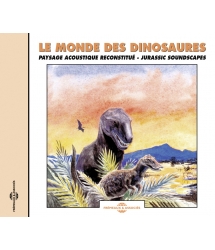
PAYSAGE ACOUSTIQUE RECONSTITUE - JURASSIC...
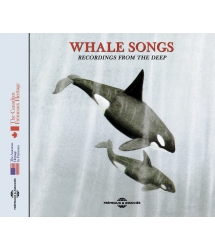
RECORDINGS FROM THE DEEP
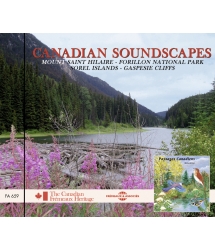
MOUNT SAINT-HILAIRE - FORILLON NATIONAL PARK - SOREL...



-
PisteTitreArtiste principalAuteurDuréeEnregistré en
-
1In the Trias AreaSounds of Nature00:21:331995
-
2Forest of Giant Sequoyas of Later JurassicSounds of Nature00:14:041995
-
3Swamp Forest of the CretaceousSounds of Nature00:28:411995
-
4Time Slide to PrehistorySounds of Nature00:02:321995
Jurassic Soundscapes
“The publication of the natural sounds of Jurassic dinosaurs in the quite serious collection of biological recordings published by Frémeaux & Associés (a specialist in the edition of wildlife recordings) may at first sight appear to be a little ridiculous to the public and to the specialised press. How is the use of modern recording techniques possible for sounds of an era of more than 100 million years ago ! Nonetheless, the natural sound recorder Jean-Luc Hérelle has put together the sounds of dinosaurs that occurred between the lower Jurassic (some 200 million years ago) and Cretaceous periods : a group of Archaeopteryx in a Giant Sequoia forest in the company of a Megalosaurus, an enormous 9 metre long carnivore that’s groaning and blowing, a young Iguanodon calls its mother in a Cretaceous forest bog, followed by the terrifying cry of a Tyrannosaurus during a violent thunderstorm. The creation and production of this sound material is based on recent scientific findings, on the fact that dinosaurs and today’s birds are now known to be closely related and dinosaur replicas produced by paleontologists using much that has been discovered about them since the 19th century. Especially important has been the understanding of dinosaur morphology allowing for the recreation of their vocal apparatus (larynx and pharynx), and simulation of the passage of air through these resurrected animals to analyse their characteristics. The similarity of their respiratory organs with those of birds allows for the breathing and calls of these very much larger animals to be simulated by reducing frequency through altering recording speed in order to provide a plausible estimation of what dinosaur calls might have been.
Here, Frémeaux & Associés present the work of Jean-Luc Hérelle based on scientific interpretation, giving the public of all ages, a real insight into prehistoric sounds.”
Patrick Frémeaux - Translated in English by Tony WILLIAMS
© 2007 FRÉMEAUX & ASSOCIÉS
Warning
Today’s birds probably descend from dinosaurs : I recreated the soundscapes of the different periods at which dinosaurs lived, essentially with bird calls and sounds. I also used some amphibians sounds, along with insects and mammals ones. The master tape was made from six hours of genuine natural sounds recorded in France and North America, then modified by digital techniques. I chose to give each species of dinosaur a voice as realistic as possible, based on each animal’s morphology. Among other studies aimed at re-creating the sounds that dinosaurs emitted, let’s quote Dr David Weishampel, of Philadelphia, who studied the caracteristics of air passing through the empty comb of the Parasolaurophus. The frequency of the sound waves thus emitted, from 48 to 240 Hz, closely resemble those of a medieval wind instrument : The Cromorne, cousin of the Trombone. Researchers are convinced that dinosaurs emitted sounds and that the noisiest were the Hadrosaurides or duck-billed dinosaurs. They could whine, roar and moo. There are reasons to believe that amphibian voices occupied an important part of the soundscape, therefore the Mesozoic soundscape must have been filled with a great variety of sounds. The steps I followed to create this master symphony wonder and research of reality, for one cannot prove the exactitude of a fossile sound which lasted the time of an echo.
Time, index, and sound mater
1. Beginning of the CD in the Trias era, between 230 and 200 million years BC, 21’33”
in the marine environment of early Jurassic when the first dinosaurs appeared.
2. Forest of giant Sequoyas of later Jurassic about 170 million years BC, 14’04”
when the number of dinosaur species literally explodes.
3. Swamp forest of the Cretaceous, around 144 million years BC, at the peak 28’41”
of dinosaur reign. This concert ends with the impression of the end of the dinosaurs, around 64 million years BC.
4. Time slide to prehistory. Concert of that time with a nightingale’s song. 2’32”
The dinosaur’s world
These four soundscapes present a great variety of sounds. Only a few species of dinosaurs can be heard. I leave the interpretation of the other sounds up to your imagination.
1. Trias / Early Jurassic
Opening of an imagenary door, onto the Trias era, 230 million years ago.
We can hear a Plateosaurus, eight meter long prosauropode, scream in the midst of giant ferns, cycas, and cone trees near a lake. He moves forward in the marshes, growling, and bubbles rize from the murky bottom as he advances. A Nothosaurus, aquatic carnivor, swims to the surface. A Cœlophysis, mighty carnivor, shrieks, and the Plateosaurus plods worriedly away. All sorts of amphibians can be heard, one of them, the Metoposaurus is eight meters long. A flying reptile, the Dimorphodon, smacks the surface of the water with its spread out wings. His wingspan is 1 meter 20 wide. The insects cry out, the aquatic fauna fusses, and returns to its random activities. An oncoming storm triggers the songs of other amphibians. A Barapasaurus, fifteen meter long herbivore sauropode, grazes and splashes in the bog. Several Plesiosaurus, resembling long necked seals swim to the surface, blowing and chanting. Then the flying reptiles, first a group of Rhamphorhynchus, with long tails, then a group of Dimorphodons, fly over the shore, singing.
2. Late Jurassic
A small group of Archæopteryx, ancestor of today’s birds, rustle in the cycas and on the lower branches in the giant sequoya forest. A few Camptosaurus, six meter long herbivores, emit their low calls. In the foreground a Megalosaurus, a nine meter long flying reptile called Scaphognatus, cries out repetitively from the top of a tree. During that time the Archæopteryx quarell over insects.
3. Cretaceous
There never were so many dinosaur species. In a large, open swamp forest, flying reptiles with long file like beaks, the Pterodaustros, chant monotonously. A young Iguanodon lost its way and calls for its mother, who answers from nearby. This species could be up to nine meters long. Further a fifteen meter, long necked herbivore, the Euhelopus, breaks branches as it plods through the marshes. A Stegosaurus growls from under its impressive armor. The screams of an Acrocanthosaurus, thirteen meter long carnivor, grow louder as the animal comes nearer. A Deinonychus, mighty killer with terrible claws, loots out several times. The Parasaurolophus, spectacular ten meter long dinosaur with an empty comb, bellows in a trumpet like fashionn. A few comrads answer from a distance. The breath taking scream of the Tyrannosaurus, the largest carnivor ever, resounds. Soon the storm breaks out. The Tyrannosaurus approaches. An Alamosaurus, huge grazer with a long neck rumbles and snaps branches. Then a gigantic, seven meter wide flying reptile, the Pteranodon begins to sing. The storm grows more and more violent, the elements are in fury. It’s the death of the dinosaurs with their shrieks of agony, followed by a final explosion.
4. Timeslide to prehistory
A natural soundscape of the prehistoric period, with a Nightingale’s song, small passerine bird living at the time of the first men. Made at Paleocene, sixty three millions years ago.
Jean-Luc Hérelle - Translated in English by Tatiana NEVEU
© 1995 SITTELLE – 2007 FRÉMEAUX & ASSOCIÉS
Bibliography (very incomplete)
- Le Monde perdu des dinosaures, Découvertes Gallimard, 1989, Jean-Guy Michard.
- Encyclopédie illustrée des dinosaures, Gründ, 1991.
- Encyclopédie illustrée de la vie dans la préhistoire, Dougal & Rupert, Gründ, 1992.
- Guide des dinosaures, Delachaux & Niestle, 1993, Philip Whitfield.
- Les Dinosaures dans la préhistoire, Larousse, Réponses aux 7/9 ans, 1994.
- Les Dinosaures - Ma première encyclopédie, Larousse.
CD Jurassic Soundscapes © Frémeaux & Associés 2007. Droits audio : Frémeaux & Associés - La Librairie Sonore (Producteur initial : Sittelle, Pithys, Collection Allain Bougrain Dubourg ou Ceba) / Ecouter les chants d'oiseaux sur CD : Sons et ambiances naturelles des écosystèmes - Stéreo and digital recording of the natural landscape sound. Natural sound sceneries of écosystems, Voices of the Wild Life. Les droits de cet enregistrement sont protégés par la loi. Pour toute exploitation d’illustration sonore sur CD, DVD, CD-Rom, Télévision, Cinéma, Sites internet, scénographies (théâtre, musées…), l’autorisation et un devis gratuit peuvent être obtenus auprès de Frémeaux & Associés – fax : +33 (0)1 43.65.24.22 info@fremeaux.com
